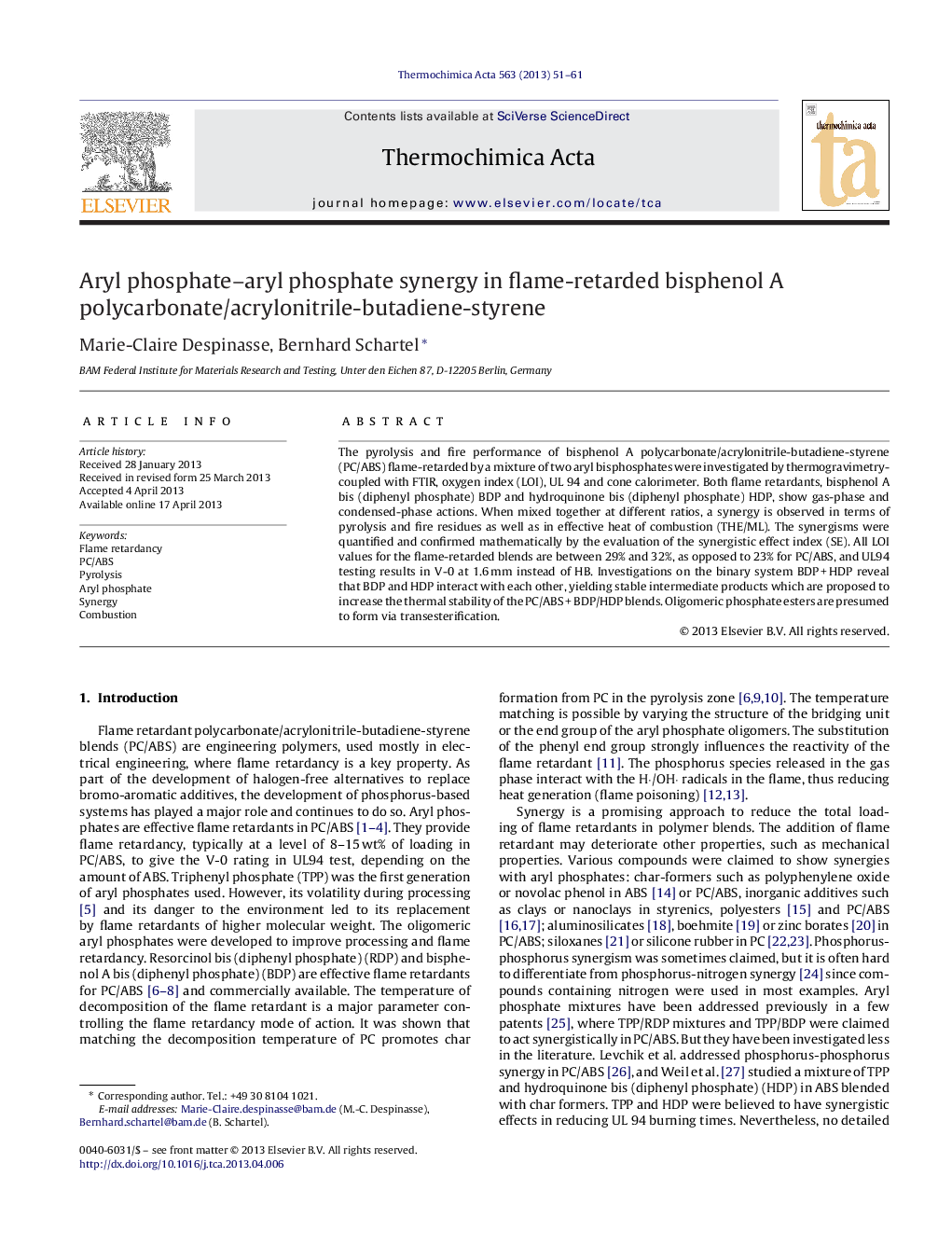| Article ID | Journal | Published Year | Pages | File Type |
|---|---|---|---|---|
| 673772 | Thermochimica Acta | 2013 | 11 Pages |
•PC/ABS blends are flame retarded by a mixture of two aryl phosphates (BDP and HDP).•BDP and HDP show both condensed-phase and gas-phase flame retardancy modes of action.•BDP-HDP mixtures increase residue formation from PC in a synergistic way.•The synergy was confirmed in terms of fire behaviour.•BDP and HDP interactions are presumed to form oligomeric phosphates.
The pyrolysis and fire performance of bisphenol A polycarbonate/acrylonitrile-butadiene-styrene (PC/ABS) flame-retarded by a mixture of two aryl bisphosphates were investigated by thermogravimetry-coupled with FTIR, oxygen index (LOI), UL 94 and cone calorimeter. Both flame retardants, bisphenol A bis (diphenyl phosphate) BDP and hydroquinone bis (diphenyl phosphate) HDP, show gas-phase and condensed-phase actions. When mixed together at different ratios, a synergy is observed in terms of pyrolysis and fire residues as well as in effective heat of combustion (THE/ML). The synergisms were quantified and confirmed mathematically by the evaluation of the synergistic effect index (SE). All LOI values for the flame-retarded blends are between 29% and 32%, as opposed to 23% for PC/ABS, and UL94 testing results in V-0 at 1.6 mm instead of HB. Investigations on the binary system BDP + HDP reveal that BDP and HDP interact with each other, yielding stable intermediate products which are proposed to increase the thermal stability of the PC/ABS + BDP/HDP blends. Oligomeric phosphate esters are presumed to form via transesterification.
